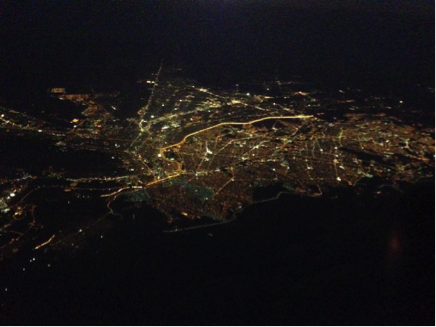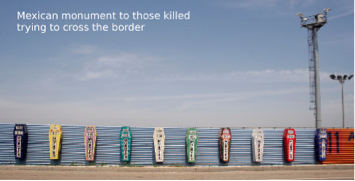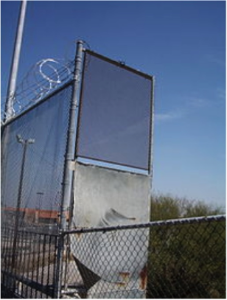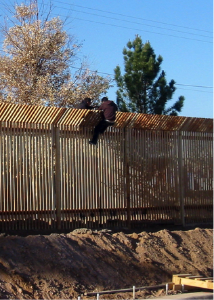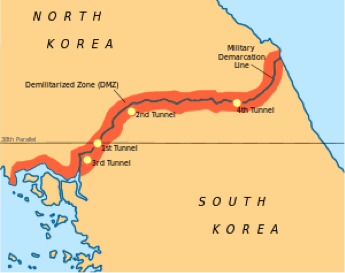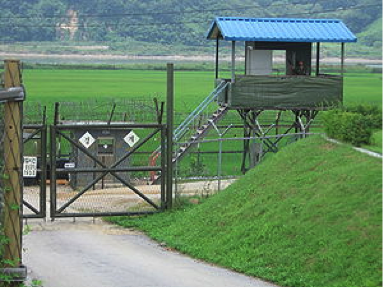Modern Walls
1961-1989: Berlin Wall
The Berlin Wall was a barrier that divided Berlin from 1961 to 1989. It was constructed by the German Democratic Republic (GDR, East Germany) starting on 13 August 1961 and it completely cut off (by land) West Berlin from surrounding East Germany and from East Berlin until it was opened in November 1989. Its demolition officially began on 13 June 1990 and was completed in 1992. The barrier included guard towers placed along large concrete walls, which circumscribed a wide area (later known as the "death strip") that contained anti-vehicle trenches, "fakir beds," and other defenses.
Length of border around West Berlin: 155 km (96 mi)
Height of segment of concrete wall: 3.6 m (11.8 ft)
Height of segment of concrete wall: 106 km (66 mi)
1976: Running Fence
Running Fence was an installation art piece by Christo and Jeanne-Claude, which was completed on September 10, 1976. The builders removed it 14 days later, leaving no visible trace. It consisted of a veiled fence 24.5 miles (39.4 km) long extending across the hills of Sonoma and Marin counties in northern California, United States. The 18-foot (5.5 m) high fence was composed of 2,050 panels of white nylon fabric hung from steel cables by means of 350,000 hooks. The cables were supported by 2,050 steel poles stuck into the ground and braced by steel guy wires anchored to the earth. (Wikipedia)
Mexico-US Border Wall
The 1,954-mile (3,145-km) border between the United States and Mexico traverses a variety of terrains, including urban areas and deserts. The wall and fence start and stop along the border and also relies on a virtual fence of cameras and sensors. The US Congress has passed various laws calling for hundreds of miles of walls and barriers to be constructed. However, the walls do not address the root problems that encourage immigrants' movement from Mexico to the US. A striking image of a part of the wall is as depicted in this aerial view of El Paso, Texas and Ciudad Juárez Chihuahua, Mexico: the border can clearly be seen dividing the two cities at night in February 2014 (see picture below).
The walls also have devastating effects on wildlife migration. Secretary of Homeland Security Michael Chertoff used his new power to “waive in their entirety” the Endangered Species Act, the Migratory Bird Treaty Act, the National Environmental Policy Act, the Coastal Zone Management Act, the Clean Water Act, the Clean Air Act, and the National Historic Preservation Act to extend triple fencing through the Tijuana River National Estuarine Research Reserve near San Diego. The Real ID Act further stipulates that his decisions are not subject to judicial review, and in December 2005 a federal judge dismissed legal challenges by the Sierra Club, the Audubon Society, and others to Chertoff’s decision.
- Mexico–United States barrier – Wikipedia - https://en.wikipedia.org/wiki/Mexico–United_States_barrier
- NPR: Borderland: Dispatches from the U.S.-Mexico Boundary
Korean Demilitarized Zone
Constructed in June 27, 1953 the DMZ is a strip of land running across the Korean Peninsula; it was established at the end of the Korean War to serve as a buffer zone between North and South Korea. It is 250 kilometers (160 miles) long, approximately 4 km (2.5 mi) wide and, despite its name, is the most heavily militarized border in the world. The 38th parallel was originally established by the US and Soviet Union after WWII. The DMZ is a barrier that separates a common culture, allowing them to grow apart as time goes on. When will this wall come down?
Korean Demilitarized Zone – Wikipedia
Checkpoints: Controlling the Wall
All walls must have checkpoints that allow individuals to cross from one side or the other. One of the well recognized checkpoints was the Cold War Checkpoint Charlie that designated a crossing point between East Berlin and West Berlin. Checkpoints are a form of control and demarcation usually set up by the weaker party trying to control their own population as well as the other's. Modern checkpoints are in the form of border crossings that require some sort of proof of identity. Walls and checkpoints are designed to control and restrict movement.
Article 13 - Universal Declaration of Human Rights - http://www.ichrp.org/en/article_13_udhr
- Everyone has the right to freedom of movement and residence within the borders of each State.
- Everyone has the right to leave any country, including his own, and to return to his country.
The Separation Wall and Checkpoints - http://www.globalexchange.org/economicactivism/wallcheckpoints
Checkpoint Charlie - https://en.wikipedia.org/wiki/Checkpoint_Charlie
Checkpoints: Controlling the Wall
All walls must have checkpoints that allow individuals to cross from one side or the other. One of the well recognized checkpoints was the Cold War Checkpoint Charlie that designated a crossing point between East Berlin and West Berlin. Checkpoints are a form of control and demarcation usually set up by the weaker party trying to control their own population as well as the other's. Modern checkpoints are in the form of border crossings that require some sort of proof of identity. Walls and checkpoints are designed to control and restrict movement.
Article 13 - Universal Declaration of Human Rights - http://www.ichrp.org/en/article_13_udhr
- Everyone has the right to freedom of movement and residence within the borders of each State.
- Everyone has the right to leave any country, including his own, and to return to his country.
The Separation Wall and Checkpoints - http://www.globalexchange.org/economicactivism/wallcheckpoints
Checkpoint Charlie - https://en.wikipedia.org/wiki/Checkpoint_Charlie



